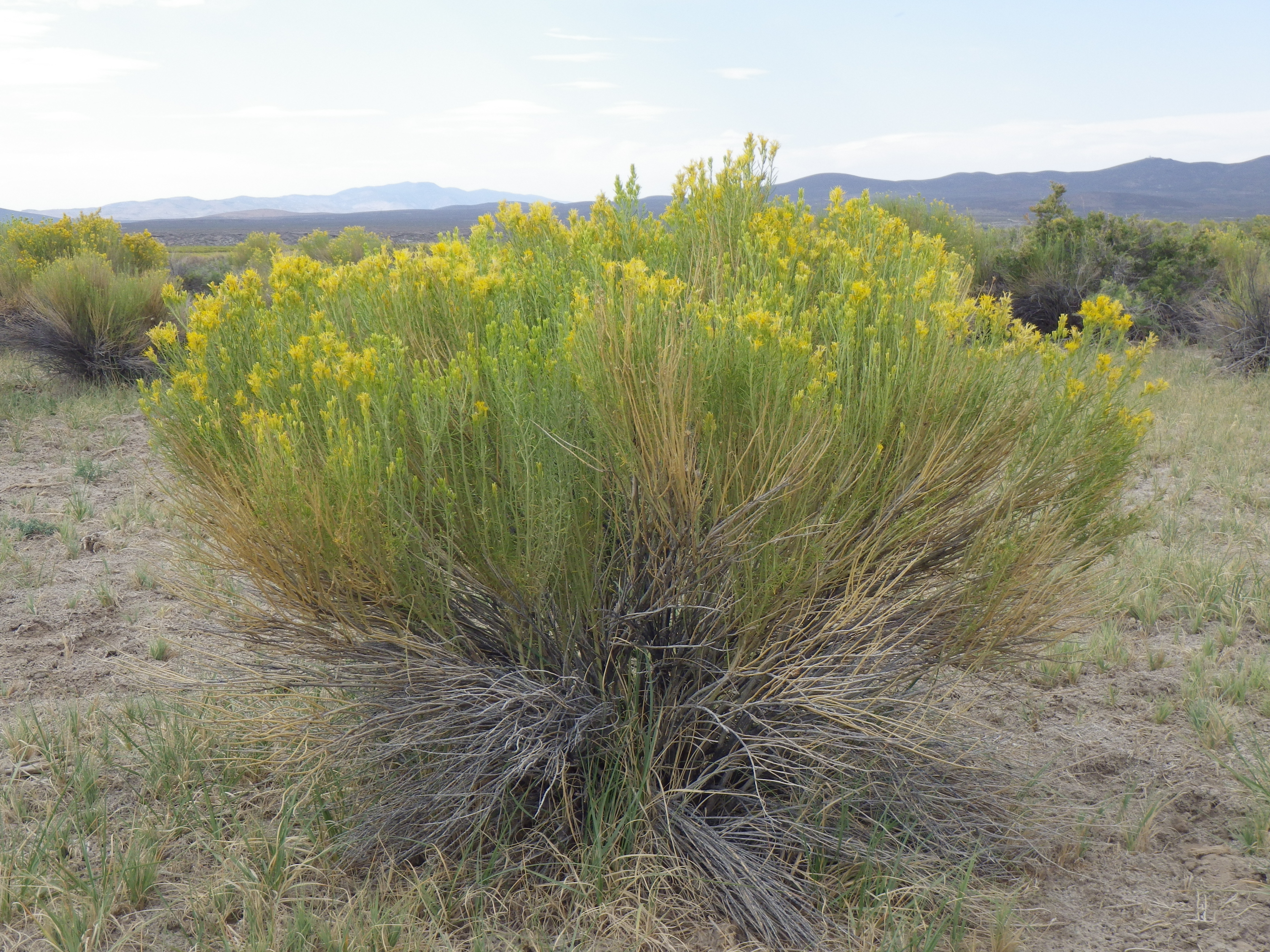Weed Of The Month: Rubber Rabbitbrush
 | Author:
Allison Kosto, MSU Broadwater County Extension Agent
MSU Broadwater County Extension Agent |
Weed of the Month: Rubber Rabbitbrush
Allison Kosto
MSU Broadwater County Extension Agent
A common sight on Montana rangeland, rubber rabbitbrush is often associated with sagebrush plant communities. It is a native species but can sometimes be unwanted due to its ability to increase under poor rangeland conditions.
Description & Habitat
Native to the western half of the United States and Canada, rubber rabbitbrush is found in dry, open areas such as plains, valley bottoms, foothills and mountains. It is an important plant species for wildlife that use it as browse during the winter, groundcover for small mammals and birds, and pollinator habitat for the late summer and early fall. Additionally, American Indians used it to make chewing gum, as a tea, yellow dye, cough syrup and to treat chest pains.
Rubber rabbitbrush is a warm-season shrub that can grow 1 to 8 feet tall. Several stems originate from a crown base. They are flexible, giving it its rubber name. The stems are gray-brown with cracks. The bark is fibrous and somewhat shreddy. Leaves are linear shaped and covered in a felt-like layer that insulates and reduces evapotranspiration. It has yellow-green flowers that appear in late summer. They are arranged in an umbrella-shaped head.
Although not considered an invasive plant, it can expand rapidly following disturbance such as abandoned crop fields, overgrazed areas or replanted rangeland. It can also be an indication of poor range management. It’s not extremely competitive so once other species establish it tends to slow down its expansion. However, since livestock do not graze the plant, there are times when control measures may be warranted to reduce rubber rabbitbrush and allow space for more desirable species.
Management
Avoiding disturbance or overgrazing and maintaining a healthy population of native or desired species is often effective to keep rubber rabbitbrush at a manageable level. Oftentimes, it is not necessary to remove an entire stand of rabbitbrush. Simply thinning or reducing is often sufficient.
Physical control methods such as burning, cutting or mowing are often not effective. Instead, they tend to stimulate growth and lead to further expansion of rabbitbrush density. Manually removing the plants by digging can be successful on young plants as long as a majority of the root system is removed. However, on older shrubs, it is extremely difficult and is generally not practical to dig. There are two biological control insects that are in the research phase but have not been released.
Herbicides are also an option. However, the plant’s health should be taken into consideration. Plants that are under drought or stress will not absorb herbicides. Because of its extensive root system, more than one application may be necessary. Common chemicals include 2,4-D LV Ester, Curtail, Grazon (restricted use), Milestone and Tordon (restricted use). Always read and follow the entire label when applying herbicides. Common chemical names are used for clarity but does not imply endorsement of a product or brand.
For assistance on weed identification and management, contact the MSU Extension Office in Broadwater County at 406-266-9242 or allison.kosto@montana.edu.
Article Images
Click on Image Thumbnail(s) to view fullsize image
PhotoCredit: Matt Lavin, Bozeman MT
Image 1 Caption: Rubber Rabbitbrush
Photo Credit: Matt Lavin, Bozeman MT
